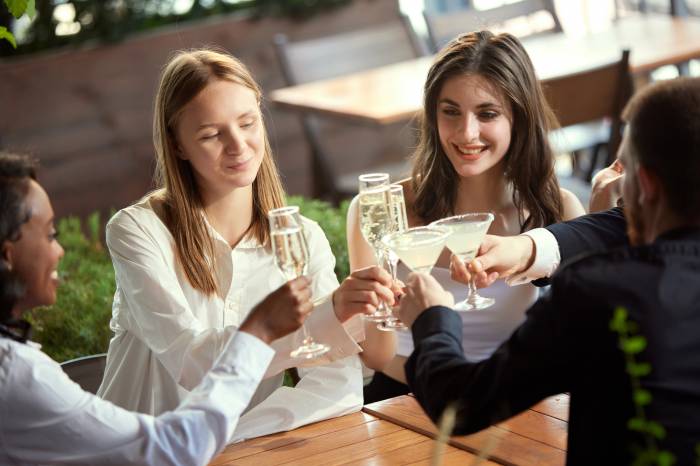Gen Z Redefines Wine Culture With Focus on Authenticity and Accessibility
Younger drinkers favor low-alcohol, sustainable wines and casual experiences over tradition and exclusivity, reshaping industry trends.
2025-09-30

Young Americans are changing the way wine is enjoyed, moving away from traditional expectations and embracing a new, more relaxed approach. While previous generations might have paired a strong cabernet with a steak dinner, many members of Gen Z are choosing lighter, lower-alcohol wines that fit their social and health-conscious lifestyles. Industry data shows that more than half of young U.S. consumers reported not drinking any alcohol in the past six months, but this does not mean they are turning away from wine altogether.
Instead, Gen Z is seeking out wines that are less about status and more about experience. Lily Taggart, a 21-year-old chef in New York City, says that for her generation, wine is about connection rather than getting drunk. “It’s hard to forge connections if you’re drinking high ABV and can’t remember conversations the next day,” she said. Taggart believes that Gen Z is removing the pretentiousness from wine culture and focusing on intentionality and authenticity.
Research from IWSR, a drinks industry data provider, supports this shift. Gen Z consumers are gravitating toward sustainable and natural wines, as well as innovative styles like chilled reds and orange wines. They prefer bottles that are fun, easy to drink over long periods, and suitable for social gatherings. Steve Riboli, president and CEO of Stella Rosa wine label, notes that this generation wants to socialize for hours without feeling the effects of high alcohol content. Stella Rosa has responded by offering a range of flavors from black cherry to pineapple chili and launching Spritz Del Conte, a ready-made aperitif cocktail line.
The traditional image of wine as an expensive and exclusive experience is also being challenged. Taggart points out that the language and culture around wine can feel inaccessible to many young people. She believes that if someone can describe flavors they enjoy in food, they can do the same with wine, but there is still hesitation due to the perceived elitism.
In Brooklyn, the wine bar Sauced has become popular among Gen Z for its casual atmosphere and focus on natural wines and nonalcoholic options. There is no menu; instead, patrons describe what they want to the staff and receive personalized recommendations. Mira Hobbs, founder of On Cloud Wine social club in New York, says Sauced makes wine approachable and intuitive rather than intimidating.
Wine clubs like On Cloud Wine, Chardonngay, and Wine for Me are emerging across New York City to cater to this younger audience. Their goal is to make wine fun, social, and accessible. Kristin Olszewski, founder of Nomadica wine label, noticed Gen Z’s preferences while working as a sommelier at Michelin-starred restaurants. She observed that young diners often chose orange wines or chilled reds because they felt less intimidating than traditional options.
Nomadica offers canned and boxed wines with zero sugar and low calories. The packaging includes QR codes linking to curated playlists designed to enhance the drinking experience. Olszewski says her aim is to invite consumers into the world of wine without talking down to them. Nomadica reaches young drinkers through social media campaigns, music festivals, and organic markets like Whole Foods.
Affordability is another key factor for Gen Z when choosing wine. Olszewski emphasizes the importance of making wine accessible and aligning with health-conscious values. Hoxie Spritzer is one example: it’s a low-alcohol, no added sugar beverage made with sustainable practices. Founder Josh Rosenstein wanted to create something easy to drink in social settings while still allowing people to maintain an active lifestyle.
Hoxie offers flavors like grapefruit elderflower to provide a unique experience for drinkers. Rosenstein says he wants people who drink Hoxie with friends to feel transported—whether it’s imagining themselves on vacation or relaxing by a lake.
Industry leaders agree that times are changing for wine in America. They say the traditional industry must adapt to meet the tastes and values of younger consumers rather than relying on old models of exclusivity or tradition.
For Taggart and others in her generation, being a wine drinker no longer means fitting into an old stereotype. She recalls thinking only older or wealthy people could enjoy wine but now sees it as something for anyone—especially those who value authenticity and community over status or expertise.
Founded in 2007, Vinetur® is a registered trademark of VGSC S.L. with a long history in the wine industry.
VGSC, S.L. with VAT number B70255591 is a spanish company legally registered in the Commercial Register of the city of Santiago de Compostela, with registration number: Bulletin 181, Reference 356049 in Volume 13, Page 107, Section 6, Sheet 45028, Entry 2.
Email: [email protected]
Headquarters and offices located in Vilagarcia de Arousa, Spain.